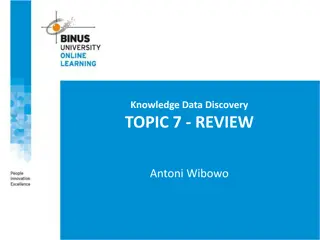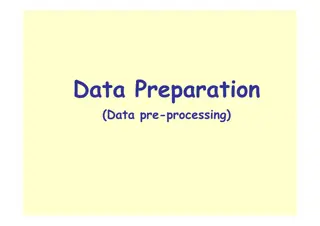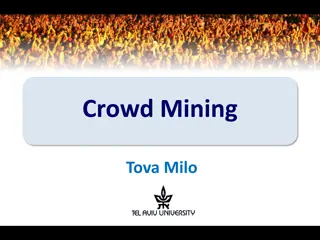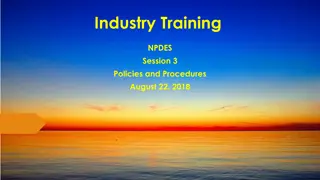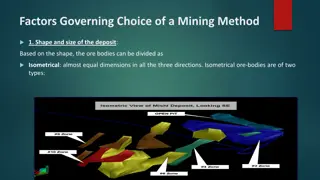
Detecting Low Self-Esteem in Youths from Web Search Data
Explore the study on using Google search logs to detect signs of low self-esteem in individuals and its association with mental health. Learn about data collection methods and the creation of a prediction model using Hybrid Bayesian Regression.
Download Presentation

Please find below an Image/Link to download the presentation.
The content on the website is provided AS IS for your information and personal use only. It may not be sold, licensed, or shared on other websites without obtaining consent from the author. If you encounter any issues during the download, it is possible that the publisher has removed the file from their server.
You are allowed to download the files provided on this website for personal or commercial use, subject to the condition that they are used lawfully. All files are the property of their respective owners.
The content on the website is provided AS IS for your information and personal use only. It may not be sold, licensed, or shared on other websites without obtaining consent from the author.
E N D
Presentation Transcript
CS548 - Fall 2019 Web Mining ShowCase Showcase by Narges Ahani, Pascal Bakker, and Anirudh Basavraj Paramshetti Showcasing work by Anis Zaman, Rupam Acharyya, Henry Kautz, and Vincent Silenzio on Detecting Low Self-Esteem in Youths from Web Search Data
References [1] Zaman, Anis & Acharyya, Rupam & Kautz, Henry & Silenzio, Vincent. (2019). Detecting Low Self-Esteem in Youths from Web Search Data. International World Wide Web Conference [2] Logistic Regression: Introduction to Data Mining, 2nd Edition (2019); Pang-Ning Tan, Michael Steinbach, Anuj Karpatne and Vipin Kumar; Chapter 4, Section 4.6 [3] Support Vector Machines: Introduction to Data Mining, 2nd Edition (2019); Pang-Ning Tan, Michael Steinbach, Anuj Karpatne and Vipin Kumar; Chapter 4, Section 4.9 [4] Bayesian Inference Binomial Distribution: Stigler, S. M. (1982). "Thomas Bayes' Bayesian Inference", Journal of the Royal Statistical Society, series A 145, 250-258 [5] JW Pennebaker, RJ Booth, RL Boyd, and ME Francis. (2015). Linguistic inquiry and word count: LIWC2015. Austin, TX: Pennebaker Conglomerates.
Introduction Purpose: Use Google search logs (i.e., queries) to identify signs of low self esteem (LS) in individuals. LS may be associated with different aspect of mental health. How? Use Google search history of participants Use health assessment survey of participants Create a prediction model with Hybrid Bayesian Regression
Introduction Why use search logs instead of social media? No self censoring Large volume Apply on individual level
Data Collection Recruit participants 2-month on-campus recruitment process 108 participants, 40 male and 68 females Ask participants to take the Promote Health survey Download Google search history for each participant through the Google Takeout platform data is de-identified via Google s Cloud Data Loss Prevention (DLP) API before handing it to the research team
Data Collection Through Promote Health survey, the answers to self- esteem questions were used to compute the Rosenberg Self- Esteem Scale (RSES) 53 individuals had score less than 12 (on a scale of 0-30), indicating low self-esteem (LSM) and 55 individuals had score greater than or equal to 12 indicating no sign of low self- esteem Year Number of students Freshman 38 Sophomore 18 Juniors 17 Seniors 19 5thyear undergraduates 4 Graduate 12
Creating Features From Search Logs (Queries) 2 Types of Features Search Categories based features Linguistic based features(LIWC)
Feature Creation: Search Categories Google Cloud NLP API Content Classification API returns hierarchical list of categories. Take top category in list. Search Query q -> API -> Hierarchical List 1. Arts & Entertainment, 2. Humor, 3. Funny... Categorize q as broad category 1. Arts & Entertainment Search frequency of LS vs NLS with greatest difference LS: Low Self Esteem NLS: No Low Self Esteem Note: there are 27 categories
Data Exploration: Search Categories Compare frequency of categories of LS/NLS users LS more reliant on web searching for school work LS search at higher frequency during late hours Search frequency of LS vs NLS with greatest difference LS: Low Self Esteem NLS: No Low Self Esteem
Feature Creation: Linguistic LIWC - Linguistic Inquiry and Word Count LIWC toolkit outputs proportion of words in each category Linguistic (prepositions, adverbs, first-person singular pronouns, conjunctions) Psychological (happy, anger, achievement, etc.) Topical (leisure, money, etc.) LIWC used to analyze individual search histories Compare LS and NLS proportional word counts
Feature Creation: Linguistic The LIWC toolkit outputs 92 different attributes 40 of these LIWC attributes are significantly different (with p-value < 0.05) between LS and NLS subjects
Data Exploration: Linguistic LIWC categories that were significantly different between LS and NLS
Modeling n: Number of people m: Number of features (i.e. search categories extracted from search history) : Vector represents features for person Pi, Person Pi exhibit low self-esteem Otherwise Two parameters to learn:
Modeling Hybrid Bayesian Regression (HyBaR) Bayesian Linear Regression Bayesian Logistic Regression Incorporate Why Bayesian Regression? Domain Knowledge In a form of prior
Modeling Bayesian Rule Likelihood Prior Posterior Marginal Likelihood
Modeling In Summary: to get the posterior of parameters from the corresponding prior distribution and the training data likelihood. Goal: to estimate the entire posterior distribution and sample model parameters from posterior distribution
Modeling Sample several parameters from posterior distribution Using each of those learned parameters, classify the test dataset Record the performance of the model for each set of parameters Report the average performance of the model on test set
Conclusions Study self-esteem not on the population level (Google Trends) but on individual level (Google Takeout) for the first time Built a system to consent, collect and anonymous individuals history data through Google Takeout Created the first datasets that link search history data to clinically-used mental health survey instrument Showed that search history data provides identifiable signals for detecting low self-esteem and high self-esteem
Future Work Use both feature sets at the same time need to collect more data Study on more general population than only college students Try different data source (recruitment sites) i.e., clinics, emergency rooms, family courts,... Consider features beyond linguistic and search categories E.g. Time at which these searches are made, seasonality of certain type of searches. Some hypothesis: Middle of night search proxy for sleeplessness problem Increase in volume of searches withdraw from social interactions Time and date of search longitudinal studies on disease progression Study other mental health phenomenon i.e. anxiety, panic disorders, suicide ideation, bipolar disorders, eating disorders, substance abuse or addiction











